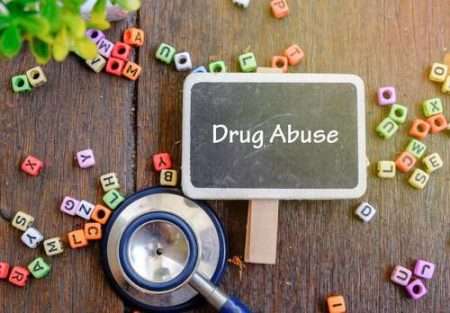Addiction is a complicated topic and what makes something addictive is dependent on a number of factors. In the case of substance addiction, it is often not only about the drug itself but the individual using it. This makes it harder to answer the question, “what are the most addictive drugs?” However, there are some drugs that are more addictive in general to more of the population.
Rehab Costs & Options for Alcohol | Drugs | Other addictions
Ultimately, any drug can be addictive. Actually, just about any substance or behaviour, such as drinking coffee or video gaming, can easily turn into an addiction. Because addiction and the factors involved are complex topics, it is hard to label one drug as the “most addictive”. However, there are certainly some drugs that cause physical dependence, and withdrawal, in the user. They can also ‘re-write’ the brain to crave these substances.
What Makes Drugs Addictive?
From the medical perspective, there are various factors that are taken into account when measuring a drugs addictiveness, namely:
- Level of intoxication
- Reinforcement potential
- Tolerance potential
- Withdrawal symptoms
- Biological dependence
There are also other psychosocial factors that come into play and may affect one’s perception of the addictiveness of a drug, such as:
- Availability
- Social Acceptance
- Legality
- Individual circumstances and preferences
Level of Intoxication
Intoxication refers to the effects the drug produces, including the high itself, the strength of the high, and the lasting after effects. Generally speaking, the stronger the drug, the more attractive it is to users.
Reinforcement Potential
Reinforcement means how likely the person is to engage in repeated use. Drugs with short-lived effects, such as cocaine, encourage the user to consume more often. The more the person uses, the more likely they are to get hooked.
Tolerance Potential
While anyone can build a tolerance to any drug, certain substances seem to have a greater tolerance potential than others. This ties back to reinforcement. Repeated and long-term use of a drug increases a person’s tolerance. Therefore, after a while, the same dose that got them high the first time will not be enough later on.
Withdrawal Symptoms
Certain drugs have very severe withdrawal symptoms, while have little to none. Withdrawal plays a big role in addiction because a person may feel compelled to take more of a drug to relieve any discomfort caused by withdrawal.
Biological Dependence
Biological dependence encompasses both psychological and physical addiction. Drugs cause changes in the brain and body, and some substances can cause long-lasting or permanent changes. For example, long-term alcohol use has been shown to alter and damage the brain.
Repeated use of any drug can change how the body or brain responds to future use, potentially causing tolerance and withdrawal symptoms. At some point, a person will not be able to function without the substance. Someone who abuses sleeping pills may find that they can no longer sleep soundly without their medication. Even worse, the drug may stop being effective altogether.
Availability
How likely a person is to be addicted to any substance is partly determined by its availability. Simply said, if heroin is not readily available in a certain area, people will be less likely to become addicted to heroin. Almost every city has their own drug market, where one substance may be more readily available than another. This changes over time as well, so studies measuring how many people are addicted to a certain drug may skew one’s perception of its addictiveness.
For example, barbiturates are considered a very addictive drug, but they are not commonly prescribed or found on the street anymore. Therefore, there are less people addicted to barbiturates today than several decades ago, when they were more prominent and barbiturates do not figure prominently in most statistics anymore
This doesn’t mean that barbiturates are less addictive than heroin, but if a person sees that 60% of people in an area are addicted to heroin, 30% to cocaine, 8% to meth and only 2% to barbiturates, they may be led to believe that barbiturates are not as dangerous.
The price of a drug can also affect statistics, but on a more personal level. Someone may not be able to afford a cocaine habit, for example, so they may choose the more cheaper amphetamines instead.
Social Acceptance
In addition to availability, social acceptance matters as well. “If everyone is doing it, it must be ok, right?” is a common attitude. Thus, alcohol is readily available in most parts of the world, and drinking is widely accepted by social standards.
Take a city like Belfast, where heroin is said to be as easy to buy as cigarettes. And like in most large cities, alcohol is readily available as well. While Belfast does have a serious opioid problem, there are far less heroin addicts than people with a drinking problem. Whereas one can easily suggest going to a pub after work, it would still raise eyebrows to ask your friends to casually shoot up.
It works in reverse as well. If all your friends are smoking marijuana, even if it is illegal, you may find this activity normal, and not think of the drug as something particularly serious or taboo.
Legality
Whether a drug is legal or not can also affect its availability and social acceptance. Many people will think twice before consuming an illegal substance. This is why prescription painkillers are a growing problem. People think that just because it is recommended by a doctor, there must be no harm in using it, even recreationally. The same, of course, may be said for alcohol.
Personal Circumstances
The addictiveness of a drug depends on the person as well, and it’s not just about the person’s potential to become addicted. Personal preferences matter as well. For example, a person may use drugs to relax, so they will seek something calming like marijuana or alcohol, and pass on stimulants like cocaine or amphetamines.
What are the Most Addictive Addictive Drugs?
Some of the most addictive drugs may be well-known to you, such as heroin and cocaine, while others, such as alcohol and caffeine, may come as a surprise. Why? Because certain drugs are not considered “drugs”.
Nevertheless, addiction is very much a real and serious problem, even when it comes to legal substances. Although drugs are all different, they still share the same factors that create the potential for addiction.
Because the measure of the addictiveness of a drug is not straightforward, no one substance can be said to be the most or least addictive. However, from a professional standpoint, there are several drugs that are deemed high-risk.
Heroin
Heroin is likely the first drug that comes to mind when you think of a highly addictive and high-risk drug. Because of its powerful effect on the brain, especially dopamine, and severe withdrawal symptoms, it is both psychologically and physically addictive.
Referring to the previously mentioned factors, heroin seems to tick most of the boxes. It produces a strong and long-lasting high, and users tend to redose when it wears off. Because of this, users tend to build a tolerance quickly, which is why opiate-related deaths are such an issue. Although very illegal and not as socially acceptable as other drugs, heroin is generally not hard to find in most major cities.
Withdrawal from heroin is one of the major reasons the drug is so hard to quit. Not only can a person experience severe depression, vomiting and physical pain, but the symptoms onset quite quickly. This is one reason why many people opt for opioid-substitution therapy with methadone, which unfortunately only prolongs their addiction.
Cocaine
Although also illegal, cocaine is much more socially accepted. In fact, it is often glamourised. In cities like London, cocaine use is so widespread that someone who hasn’t been exposed to it may be viewed as odd.
Cocaine is not considered especially physically addictive but it is highly psychologically addictive. With some drugs, the side-effects of the high can be off-putting (e.g. paranoia or extreme appetite with marijuana). But cocaine generally produces a feel-good happy high and gives a person extra energy. It also acts quite quickly, although this can depend on the method of consumption.
However, its effects are short-lived, so a person needs to consume the next dose soon after the first to keep the high going. This makes the drug highly reinforcing, and easy to build a tolerance with. Cravings for cocaine are known to last about six months after the last use.
Like heroin, cocaine is easily bought in most cities, although it is usually more expensive.
Alcohol
When most people think of drugs, they think of illegal substances. However, alcohol is very much a drug, and a very dangerous one as well. Like heroin, it is both psychologically and physically addictive, and can produce life-threatening withdrawal symptoms. For this reason, long-term or heavy drinkers wanting to quit are urged to attend a residential rehab with medical supervision during treatment.
Alcohol also affects the person’s well-being over time. The brain is largely affected via shrinkage and other damage, but this can be sometimes reversed with prolonged abstinence, although not in extreme cases. Alcohol also worsens mental illnesses, if present, or can activate psychological problems in people who are predisposed.
Depending on the amount consumed, alcohol can have strong intoxicating effects. The more one consumes, the stronger the high until the sedative effect kicks in. Tolerance can take longer to build than other drugs (although this also depends on the person itself), but it is harder to reverse.
Unlike other drugs, alcohol is usually available, socially acceptable, and legal (in most countries). Alcohol’s social benefits make it quite reinforcing. Because of this, one may not notice how casual drinking transforms into alcoholism.
Nicotine
Nicotine is yet another drug that is legal and available. Although some people don’t classify tobacco as a drug, it is becoming less and less socially accepted in western culture. However, it remains the most common addiction in many countries, including the US.
Although it seems strange to say, especially when using heroin as a comparison, nicotine is actually one of the most addictive drugs in the world. Nicotine is rapidly absorbed into the bloodstream, so its intoxicating effects are felt almost immediately. It’s effects are less pleasurable than heroin or cocaine, but nicotine is classified just as addictive.
Tolerance builds semi-quickly, and it is not unheard of for a person to go from one cigarette to a pack a day in a short period. Withdrawal symptoms can be felt at any time as soon as the first cigarette is finished or only after prolonged use. However, they are considered unpleasant, which is why smoking is one of the hardest habit to kick.
Caffeine
We hear about the opioid crisis or rising rates in alcoholism, but the most common addiction in the UK is actually legal caffeine. To say it is “readily available” would be putting it mildly. How many people don’t drink coffee, tea, or soda?
Although caffeine is technically a drug, it is one that does less damage than most (unless abused). At the moment, there are no rehabs that specialise in caffeine addiction. However, it is important to understand that just because a substance is commonplace and maybe beneficial to one’s well-being, doesn’t mean it’s not a drug.
Like other stimulants, Caffeine tends to elevate energy levels and mood. Like other drugs, it also affects the brain’s dopamine levels, which makes it reinforcing. Regular caffeine consumers do build up a tolerance, and withdrawal symptoms, such as tiredness and loss of concentration, are felt when the drug wears off.
Of all the drugs, caffeine is probably the most socially acceptable and is mainly seen as a good thing. It is not without its negative side, however. If taken in large quantities long-term, caffeine can adversely affect parts of the body, especially the nervous system, and skin and muscle tissue.
Addiction Doesn’t Stop at the Most Addictive Drugs
There are many reasons why a substance or behaviour can be addictive. As you can see, each drug has its own factors that make it addictive. Although certain substances are viewed as highly addictive, this doesn’t make the less-addictive substances any more acceptable.
It is also worth pointing out that some of the fastest-growing and most dangerous addictions today are not substance-based at all but relate to behaviours such as gambling, pornography, and computer gaming. Gambling alone is said to claim more suicides than any other addiction.
Any addiction is dangerous.
If you think that you, or someone you know, has a problem with addiction, call us today and we can answer any questions you have.



